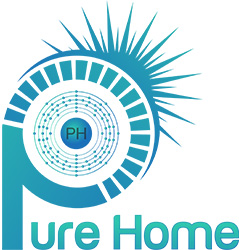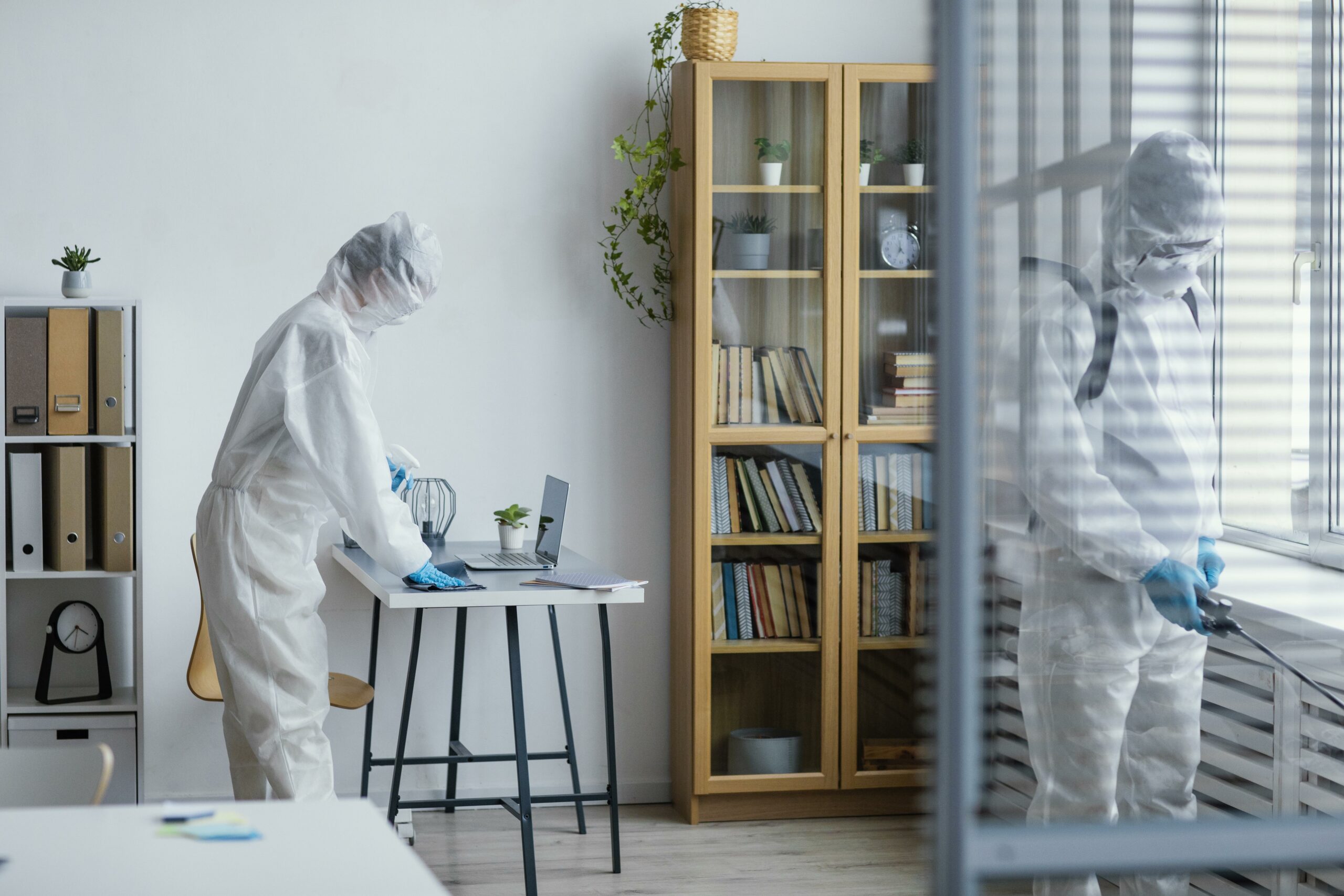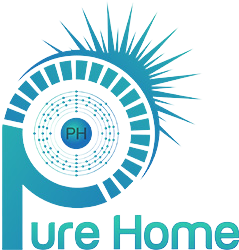How to Know When to Call a Professional When You Find Mold
Mold is a common issue that can occur in homes and can have detrimental effects on both health and property. It is essential to know when to call a professional for mold remediation to ensure the safety of yourself and your loved ones. This article will provide valuable information on the dangers of mold and help you identify if your home has a mold problem. It will also discuss when it is necessary to seek professional help for mold remediation and the importance of professional mold removal.
Hiring a mold inspection expert will be explored, including tips on choosing the right professional and what to expect during a mold inspection. By understanding the importance of addressing mold issues promptly and with the help of professionals, you can ensure a safe and healthy living environment.
The Dangers of Mold

Mold can pose significant risks to both your health and your home. Understanding the dangers associated with mold is crucial in order to protect yourself and your family.
- Respiratory issues: Exposure to mold can lead to a variety of respiratory problems, such as coughing, wheezing, and difficulty breathing. These symptoms can be particularly severe for individuals with asthma or allergies.
- Allergic reactions: Mold spores can trigger allergic reactions in some people, causing symptoms like sneezing, itching, and skin rashes. It’s important to note that different individuals may have varying levels of sensitivity to mold.
- Asthma attacks: For individuals with asthma, mold can exacerbate symptoms and increase the frequency and severity of asthma attacks. Mold spores can irritate the airways, leading to inflammation and constriction of the bronchial tubes.
- Fungal infections: Certain types of mold, such as Aspergillus and Stachybotrys, can cause infections in individuals with weakened immune systems. These infections can affect various parts of the body, including the lungs, skin, and sinuses.
- Structural damage: Mold can also cause significant damage to your home. It can weaken the structural integrity of buildings, leading to issues like warped walls, cracked foundations, and deteriorating wood or drywall.
To prevent the dangers of mold, it’s important to address any moisture or water issues in your home promptly. Proper ventilation, controlling humidity levels, and fixing leaks can help prevent the growth of mold. In cases where mold is already present, it is essential to hire a professional mold remediation specialist to safely remove and clean the affected areas.
By understanding the dangers of mold and taking appropriate measures to prevent its growth, you can safeguard your health and preserve the integrity of your home. Stay vigilant and address any signs of mold promptly to maintain a safe and healthy living environment.
How Does Mold Impact Health?
Mold can have a significant impact on health, and it is important to understand how mold can impact health. Here are some ways in which mold can affect your well-being:
- Allergies: Wondering how mold impacts health? Mold spores can trigger allergic reactions in some individuals, causing symptoms like sneezing, coughing, itching, and watery eyes. Those with existing allergies or respiratory conditions are especially susceptible to these reactions.
- Asthma: One of the ways mold impacts health is by worsening asthma symptoms in individuals with the condition. Mold exposure can lead to asthma attacks, resulting in breathing difficulties, wheezing, and chest tightness.
- Respiratory Infections: Prolonged exposure to mold can weaken the immune system, making individuals more prone to respiratory infections such as bronchitis or pneumonia. This is another way in which mold can impact health negatively.
- Fungal Infections: Did you know that mold can cause fungal infections? Certain types of mold, such as Aspergillus or Candida, can lead to fungal infections in the lungs, sinuses, or skin. Medical treatment may be necessary for these infections.
- Toxic Effects: Mold can have toxic effects on health. Some molds produce mycotoxins, which are harmful substances when inhaled or ingested. Over time, exposure to mycotoxins can result in neurological symptoms, immune system suppression, and other health problems. This is an important aspect to consider regarding how mold impacts health.
- Sick Building Syndrome: Another way mold impacts health is through contributing to sick building syndrome. When mold grows indoors, it can cause various health issues for occupants of the building, contributing to this condition.
If you suspect mold growth in your home and you or your family members are experiencing health symptoms, it is essential to seek professional help for mold remediation. By taking appropriate measures to address mold issues, you can protect your health and well-being effectively.
When Does Mold Become a Problem?
When does mold become a problem? The first step is identifying and knowing if your home has mold, then it becomes a problem as soon as mold starts to grow and thrive in indoor environments. It tends to thrive in damp and poorly ventilated spaces, particularly in areas with high humidity levels.
Multiple factors determine when mold becomes a problem. Firstly, the presence of mold can lead to various adverse health effects. Mold spores have the potential to trigger allergies, respiratory issues, and other health problems. Some varieties of mold even produce mycotoxins, which can be harmful if inhaled or ingested. Therefore, if mold is impacting your health or the health of your household members, it is indeed a problem.
Secondly, the extent of mold growth plays a significant role. If you only notice a small amount of mold in a confined area, it may be possible to clean it up on your own. However, if the mold covers a large area, spreads quickly, or is concealed behind walls or ceilings, it is advisable to seek the assistance of a professional to effectively address the problem.
Moisture or water damage can exacerbate the mold issue. If there is an ongoing moisture problem, such as a leaky pipe or roof, the mold will continue to grow even after cleaning. In such cases, it is essential to address the underlying moisture problem to prevent future mold growth.
Pro-tip: Make it a habit to regularly inspect your home for signs of mold growth, including musty odors, visible mold, or water stains. Take prompt action to resolve any moisture issues and consider contacting a professional mold remediation company if the problem persists or is extensive. Taking immediate action will help prevent further damage to your property and safeguard your health.
Identifying Mold in Your Home

When it comes to spotting mold in your home, it’s crucial to know the telltale signs and high-risk areas that may require professional attention. In this section, we’ll dive into the nitty-gritty of identifying mold growth. From common signs that might indicate mold presence to different types of mold and their unique characteristics, we’ll equip you with the knowledge you need to keep your home mold-free. So, let’s get started and uncover the secrets of mold detection!
Common Signs of Mold Growth
Identifying common signs of mold growth is crucial in determining whether you have a mold problem in your home. Here are some indicators to help you recognize the presence of mold:
- Visible mold: One of the most evident indications is the presence of visible mold growth. You may notice black, green, or brown patches on walls, floors, or ceilings. Mold can also develop on furniture or other household items.
- Musty odor: The presence of a strong, musty smell is often associated with mold. If you detect a persistent unpleasant odor in specific areas of your home, it could signify hidden mold growth.
- Allergic reactions: Mold can trigger allergic reactions in sensitive individuals. If you or your family members experience symptoms like sneezing, coughing, watery eyes, or respiratory issues that improve upon leaving the house, mold growth might be the causative factor.
- Water damage: Areas that have suffered water damage from leaks, floods, or excessive moisture are prone to mold growth. Check for discoloration, warping, or peeling paint, as these can indicate underlying mold issues.
- Humidity levels: High humidity levels create an ideal environment for mold growth. If you observe condensation on windows, damp spots on walls, or excessive moisture in your home, it increases the likelihood of mold growth.
It’s crucial to address mold growth promptly to prevent further damage to your home and protect your health. If you notice any of these common signs of mold growth, consider contacting a professional mold remediation service to assess the situation and provide appropriate solutions.
In the early 18th century, mold was still a mystery, causing widespread illness and damage. It wasn’t until the discovery of penicillin by Alexander Fleming in 1928 that the first successful treatment for bacterial infections was found. This breakthrough paved the way for further studies on mold and its effects on human health.
Today, we have a better understanding of the common signs of mold growth and the importance of addressing it promptly. Thanks to ongoing research and advancements in mold prevention and remediation techniques, we can protect our homes and health from the harmful effects of mold.
Types of Mold and their Characteristics

| Mold Type | Characteristics |
|
Aspergillus
|
Commonly found indoors and outdoors, it can cause allergic reactions and respiratory issues. It thrives in damp environments.
|
|
Penicillium
|
Usually found on water-damaged materials, it can cause allergies and asthma symptoms. It often has a blue or green appearance.
|
|
Stachybotrys
|
Also known as black mold, it is toxic and produces mycotoxins. Exposure to this mold can lead to severe health issues, including respiratory problems and neurological symptoms.
|
|
Cladosporium
|
Commonly found on decaying plants and materials, it can cause respiratory problems and skin infections. It has a powdery or black appearance.
|
|
Alternaria
|
Often found in damp areas, such as bathrooms and kitchens, it can cause allergic reactions and asthma symptoms. It has a velvety texture and can be black or dark green in color.
|
|
Chaetomium
|
Usually found in water-damaged homes, it has a musty smell. Exposure to this mold can cause allergic reactions and respiratory issues.
|
|
Trichoderma
|
Commonly found in damp areas, it can cause respiratory problems and allergic reactions. It has a green or white appearance.
|
Each type of mold has its own characteristics and potential health risks. It is important to identify the type of mold present in your home to determine the appropriate course of action for mold remediation. If you suspect the presence of mold, it is recommended to consult a professional mold removal expert to assess the situation and provide effective solutions.
Identifying High-Risk Areas for Professional Attention
- Basements and crawl spaces are often dark and damp, creating the perfect environment for mold growth. Inspect these spaces regularly and address any signs of moisture or musty odors.
- Bathrooms can be high-risk areas for mold growth due to the combination of water and high humidity. Pay special attention to areas around showers, tubs, and sinks, as well as any leaks or water damage.
- Kitchens can also be susceptible to mold growth due to moisture from cooking and improper ventilation. Check under sinks, around appliances, and in cabinets for any signs of water damage or mold growth.
- Attics with inadequate insulation and ventilation can create conditions for mold growth. Inspect for any signs of leaks, condensation, or discoloration on walls or ceilings.
- Laundry rooms may experience mold growth due to moisture from washing machines and dryers. Regularly check for water leaks and ensure proper ventilation to prevent moisture buildup.
- Mold can spread through your home via the heating, ventilation, and air conditioning (HVAC) system. Have your HVAC system regularly inspected and maintained to prevent mold growth and ensure proper airflow.
- Plumbing areas, including pipes and plumbing fixtures, are susceptible to leaks, creating damp conditions suitable for mold growth. Regularly inspect areas around pipes, water heaters, and plumbing fixtures for any signs of leaks or water damage.
Pro-tip: Keep your home well-ventilated and maintain proper humidity levels to prevent mold growth. Ensure any water leaks or moisture issues are promptly addressed to minimize the risk of mold in high-risk areas.
The Importance of Professional Mold Removal

Discover the undeniable importance of professional mold removal in ensuring a safe and healthy environment for you and your loved ones. Gain insights into the expertise of professional mold remediation and explore the efficient process of mold removal handled by the experts. With their knowledge and skills, these professionals guarantee a thorough and effective approach to eliminating mold, leaving your space mold-free and safeguarding your well-being. Say goodbye to the risks associated with mold and say hello to a cleaner and healthier living space.
The Expertise of Professional Mold Remediation
When it comes to dealing with mold in your home, understanding the expertise that professional mold remediation brings to the table is crucial. Here are some reasons why hiring professionals is essential:
- Extensive knowledge: Professional mold remediation experts possess the expertise and training required to accurately identify the type and extent of mold growth in your home. They are well-versed in the characteristics of different mold species and know how to effectively address each one.
- Advanced techniques and equipment: Professionals utilize state-of-the-art equipment and advanced techniques to effectively remediate mold. They have access to specialized tools, such as HEPA filters and moisture meters, which enable them to detect hidden mold and thoroughly remove it.
- Safety protocols: Professional mold remediation companies strictly adhere to safety protocols during the process. They take the necessary precautions to safeguard themselves, your family, and your property from potential health hazards associated with mold exposure. This includes wearing protective gear and implementing containment measures to prevent the spread of mold spores.
- Efficient and thorough removal: Professionals possess the knowledge and experience to ensure complete mold removal. They address both visible mold growth and hidden mold in hard-to-reach areas. Their comprehensive approach helps eliminate the source of the mold and prevents future recurrence.
- Prevention and future recommendations: In addition to remediation, professionals offer valuable advice on preventing mold growth. They can identify underlying causes of mold, such as moisture issues or ventilation problems, and provide recommendations to mitigate these issues and prevent future mold problems.
By relying on the expertise of professional mold remediation, you can ensure that your home is properly treated and the mold issue is effectively resolved. Consider reaching out to a reputable mold remediation company to safeguard the health and well-being of your family and protect your property from further damage.
The Process of Professional Mold Removal
During the process of professional mold removal, there are several key steps that are followed to ensure the effective remediation of mold in your home.
The affected area is carefully assessed by the professional mold removal team as part of the process of professional mold removal. This involves a thorough inspection to determine the extent of the mold growth and identify any underlying causes or sources of moisture.
Once the assessment is complete, the next step in the process of professional mold removal is containment. This is crucial to prevent further spread of mold spores during the removal process. The contaminated area is sealed off using plastic sheeting and negative air pressure machines to ensure that airborne spores are not released into other parts of the home.
The actual removal of mold is an important step in the process of professional mold removal and involves the use of specialized cleaning techniques and equipment. Non-porous materials that are affected by mold, such as tiles or glass, can be cleaned and disinfected. Porous materials like drywall or carpet may need to be removed and replaced to effectively eliminate the mold.
After the mold has been physically removed, the area is thoroughly cleaned and treated with antimicrobial agents as part of the process of professional mold removal. This step is essential to prevent any remaining spores from regrowing and to ensure that the mold problem does not resurface in the future.
As a final step in the process of professional mold removal, the professional mold removal team will conduct post-remediation testing to ensure that the area is clear of any mold contamination. This testing involves air sampling and surface swabs to verify that the mold has been successfully eliminated.
By following this comprehensive process of professional mold removal, you can effectively and safely eliminate mold from your home, ensuring a clean and healthy living environment for you and your family.
Hiring a Mold Inspection Expert
Hiring a mold inspection expert can be a crucial step when dealing with potential mold issues in your home. In this section, we’ll dive into the essential factors to consider when choosing the right mold inspection professional. We’ll shed light on what you can expect during a mold inspection, providing you with valuable insights for navigating this important process. So, let’s empower ourselves with the knowledge to make informed decisions and ensure a safe and mold-free living environment.
How to Choose the Right Mold Inspection Professional
When selecting a mold inspection professional, it is important to consider several factors to ensure you choose the right one for your needs.
- Experience: To know how to choose the right mold inspection professional, look for someone with extensive experience in the field. They should have a track record of successfully identifying and assessing mold issues in homes.
- Certification: It’s crucial to choose a professional who is certified in mold inspection. This certification shows that they have undergone proper training and adhere to industry standards.
- Insurance: Make sure that the mold inspection professional you hire has liability insurance. This provides protection to you in case any damages or issues arise during the inspection process.
- Thoroughness: A good mold inspection professional should conduct a comprehensive inspection of your home, covering both visible and hidden areas where mold may be present.
- Equipment: Inquire about the equipment the professional uses for mold inspection. They should have state-of-the-art tools such as moisture meters and infrared cameras for accurate detection of mold growth.
- Communication: It is essential to choose a professional who communicates effectively and clearly explains the findings of the inspection. Additionally, they should provide recommendations for remediation if mold is found.
By considering these factors on how to choose the right mold inspection professional, you can find someone who will provide a thorough assessment of your home and help guide you in resolving any mold issues.
What to Expect During a Mold Inspection
During a mold inspection, here’s what you can expect:
- Initial Assessment: A certified mold inspector will begin by evaluating the areas of concern and gathering information about any visible signs of mold growth or water damage. They will also discuss past or current moisture issues in the property.
- Moisture Testing: Specialized equipment, including moisture meters and thermal imaging cameras, will be used by the inspector to detect hidden sources of moisture that could contribute to mold growth. This helps identify potential problem areas that may not be visible to the naked eye.
- Air Sampling: To determine the presence of mold spores in the air, the inspector may collect air samples from various parts of the property. These samples will be sent to a laboratory for analysis, providing information about the types and concentrations of mold spores present.
- Surface Sampling: If there is visible mold growth, the inspector may also take samples from affected surfaces. These samples help identify the specific types of mold present and provide valuable information for remediation.
- Detailed Report: After completing the inspection and receiving the laboratory analysis, the mold inspector will provide a comprehensive report. This report will include findings, recommendations for remediation if necessary, and steps to prevent future mold growth.
Remember, if you suspect mold in your home, it is crucial to consult a professional for a thorough mold inspection. They possess the expertise to identify and assess the extent of the mold problem, ensuring effective and safe remediation.



